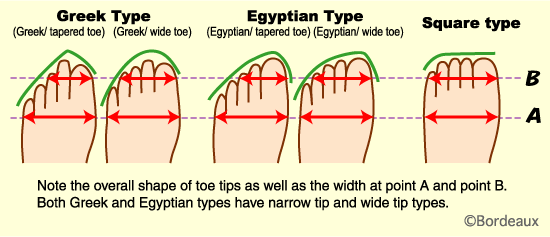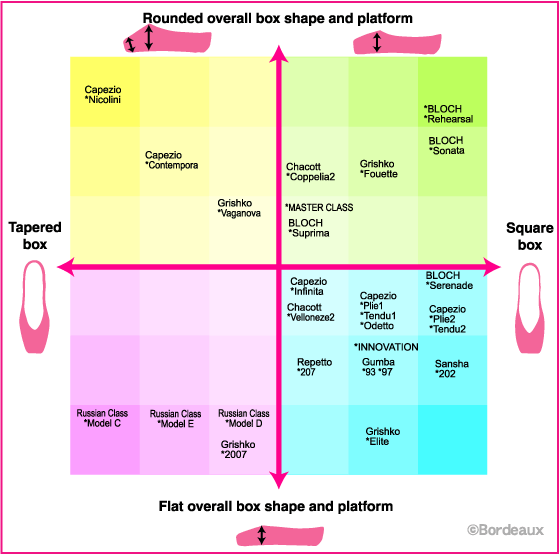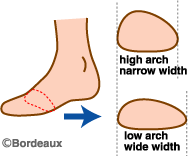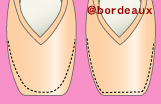It is important to know which type of feet you have in order
to find the shoes that fit you best.
There are mainly three types of feet.
Greek type -- Foot with
the second toe being the longest.
Egyptian type -- Foot with
the big (first) toe being the longest.
Square type -- Foot with
even length toes.
It is generally believed that "Egyptian" is wider at forefoot (or simply "wide") and "Greek" is narrow at forefoot (or simply "narrow"). There are, however, "wide" and "narrow" forefoot types for both "Egyptian" and "Greek" foot types.
 |
When choosing pointe shoes, different shoes will be recommended depending on the difference of foot width at point A and point B in the diagram above.





 Even if the widths are the same ...
Even if the widths are the same ... There are shoes that look square when viewed
from outside, but with "inside" shape that is tapered.
Please be aware of this when choosing your pointe shoes. This
type of shoe is great if you have tapered feet but like to wear
pointe shoes with wide platforms. If your big toe is notably
longer, however, pain may result from pressure on the big toe
nail. By the same token, there are shoes
that look tapered, but actually have wide "inside".
There are shoes that look square when viewed
from outside, but with "inside" shape that is tapered.
Please be aware of this when choosing your pointe shoes. This
type of shoe is great if you have tapered feet but like to wear
pointe shoes with wide platforms. If your big toe is notably
longer, however, pain may result from pressure on the big toe
nail. By the same token, there are shoes
that look tapered, but actually have wide "inside".